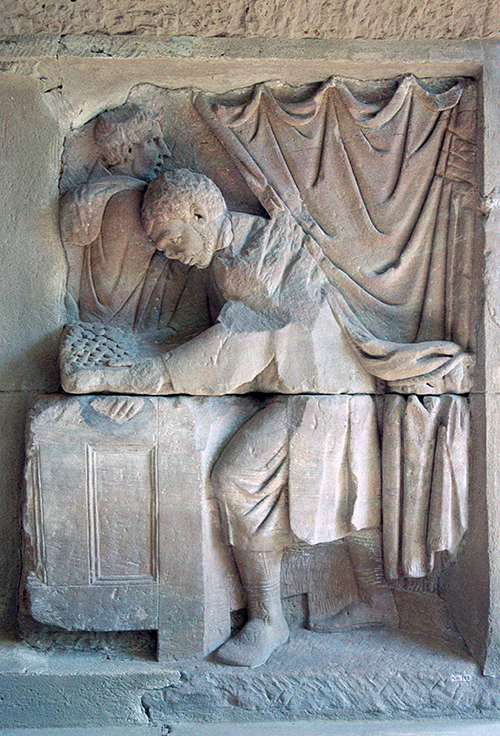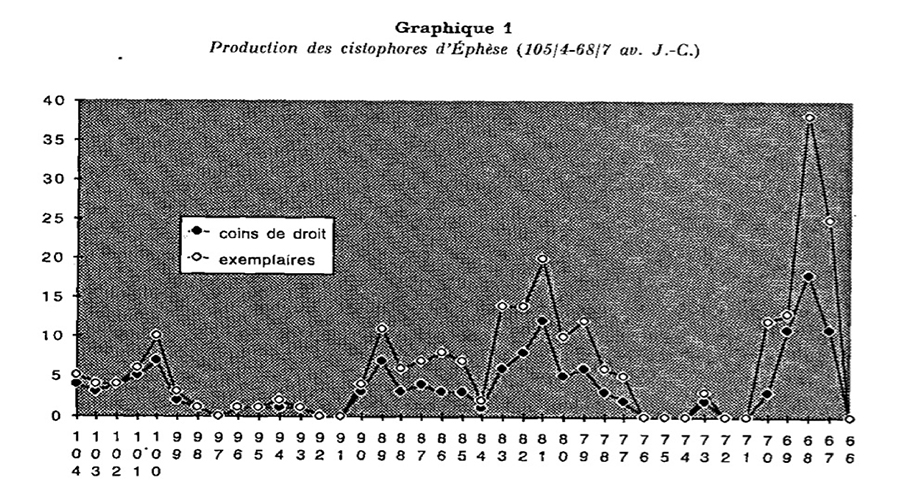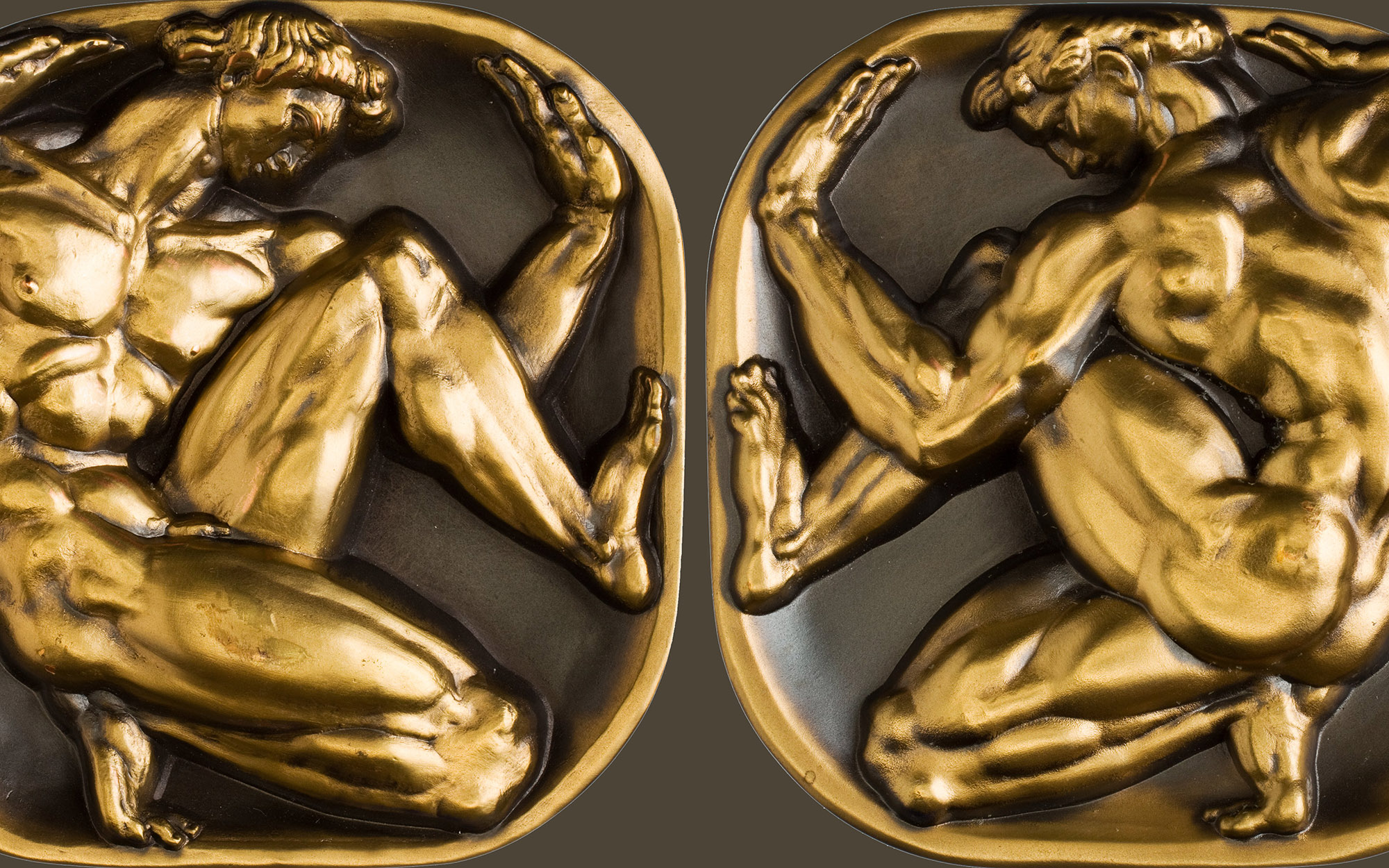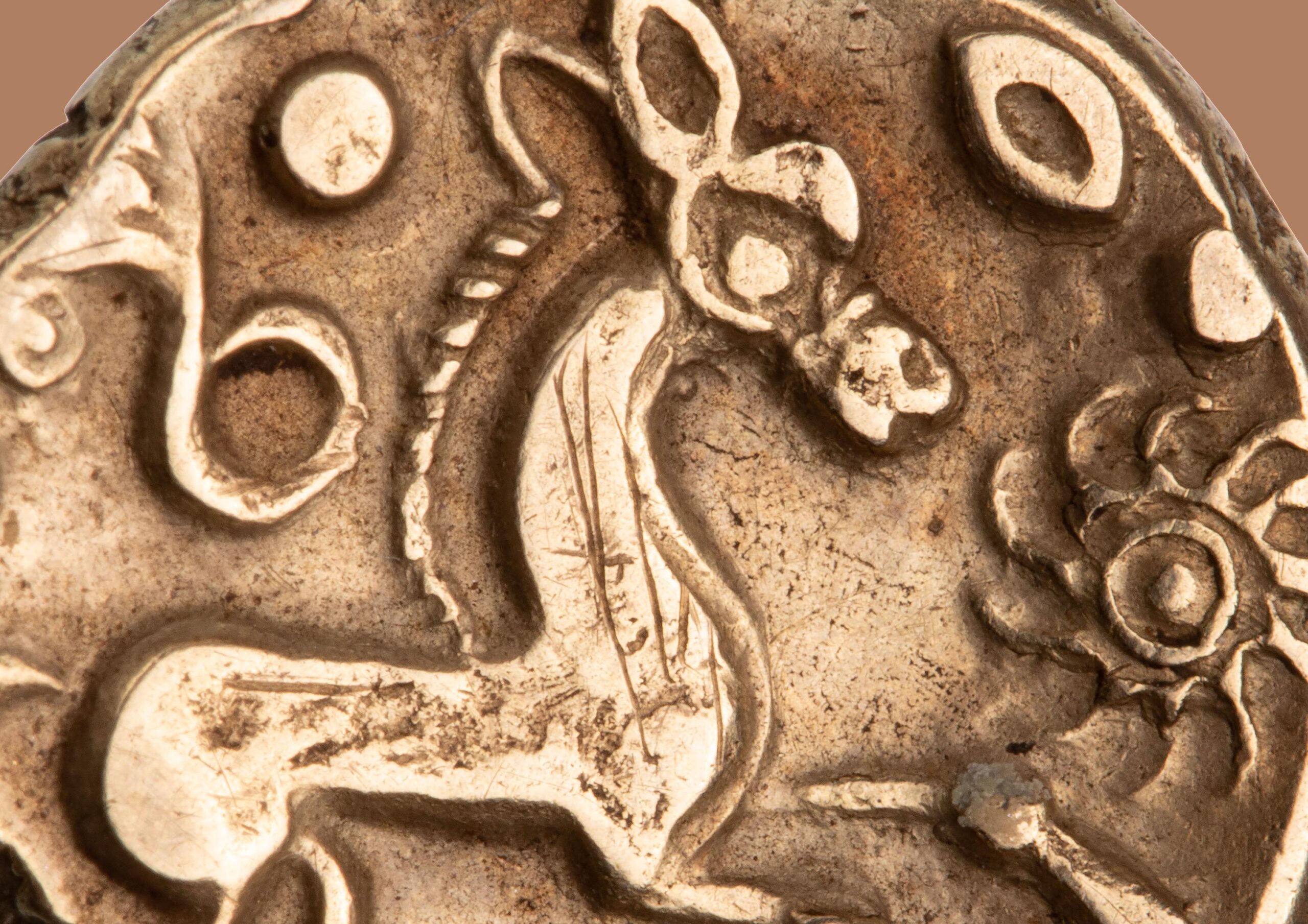Financing Sulla’s Reconquest of Italy (Pt. II)

The second part of this post on the means used by Sulla to finance his campaign in Italy will deal with the coinages issued in the Eastern provinces after the end of the First Mithridatic War, choosing as a case study the “trophies” Athenian New Style tetradrachms and the cistophori from the Province of Asia.

For what concerns Greece, Plutarch (Life of Lucullus 2.2) clearly states that the presence of Sulla and Lucullus during the First Mithridatic War led to a heightened production of local silver coinages. Military needs, i.e., the need to pay the armies involved in the war against the Pontic king, caused this steep increase in the volume of local issues (Apostolou and Doyen 2017, esp. pp. 399–403). The connection is especially clear in the case of Athens, where the production of Athenian New Style tetradrachms (Thompson 1961, pp. 425–439) was greatly heightened in the year leading up to the battles of Chaeronea and Orchomenus. While the Romans are likely to have manipulated the Athenian coinage on previous occasions, there is a general consensus that the Romans were directly responsible for 1) the so-called “Lucullan” issues with the two monograms usually read as ΜΑΡΚΟΥ (Lucullus)/ ΤΑΜΙΟΥ. 2) the so-called “trophies issues” (Figs. 1–2).

The “Lucullan” (Fig. 3) issues, characterized by a higher number of observed dies than any other year before 87–86 BCE, have as a terminus ante quem the battle of Chaeronea in 86 BCE, as these coins were likely intended to finance the military effort against Mithridates.

On the other hand (Fig. 4), the general consensus is that the issue with the two trophies should be dated after Chaeronea, because their reverse type commemorates either the two victories of Orchomenus and Chaeronea over the Pontic king or the two trophies erected by Sulla after Chaeronea, as I have already suggested on the basis of the analogous types used for RRC 359/2 in the first part of this post (Fig. 5).

Caution is indeed needed for these estimates since the Esty coverage for these issues is quite low (37.5%). However, the figures in this slide are very close to Callataÿ’s calculations, so this could provide some support to these estimates, in spite of the caution elicited by the small sample.
While the “Lucullan” issues of Athenian-like tetradrachms were probably instrumental to the financing of Roman armies in the course of the First Mithridatic War, the later issue of the “two trophies” tetradrachms could have financed Sulla’s campaigns in Italy or even provided the bullion for Sulla’s issues of denarii.
Since one Attic-weight drachm is conventionally considered equivalent to a denarius, this issue of Athenian-like tetradrachms was produced from 118 denarius-equivalent obverse dies, roughly one-third of the number of dies estimated for RRC 359/2. The similarities in reverse types and production techniques (i.e., die orientation, cf. Part I) between the “two trophies” tetradrachms and RRC 359/2 suggest that these two issues—while differing in relative importance—represented an important source of financing for the Sullan campaigns in Italy.

For what concerns the Province of Asia, Plutarch vividly describes the aftermath of the First Mithridatic War, after the hasty conclusion of the peace of Dardanus in 85 BCE. After Mithridates’ defeat, Sulla imposed on the Greek cities of Asia Minor (Fig. 6) an indemnity of 20,000 talents. The Plutarchean text also suggests that Lucullus was directly entrusted with the collection of the extraordinary tributes and fines imposed on Asia. This certainly had to do not only with the unusual nature (and amount) of the fines imposed but with extraordinary circumstances, because the societates publicanorum—not military authorities like Lucullus—were entrusted with the exaction of Asian taxes since at least the 120s BCE. The reason for the remarkable absence of the publicani from this process finds a plausible explanation with their lack of human resources after the losses suffered after the outbreak of the Mithridatic War (Appian, Mithridatic Wars 5.22). One thinks in particular of the Asian Vespers in 88 BCE in which some 80,000 (or more!) Romans are said to have been killed.

The losses suffered by the societates publicanorum in Asia thus enabled Sulla, through his lieutenant Lucullus, to have direct access to the wealth gathered from Asia, with a limited opportunity for Rome to take advantage of it (Fig. 7).

Plutarch clearly states that Lucullus was actually ordered to strike coins in Asia. Since cistophori were the silver currency overwhelmingly produced and circulating in the province up to the 40s BCE, it can be inferred that the coinage struck by Lucullus were indeed cistophori (Fig. 8). Their production shows a clear increase in the years between the end of the First Mithridatic War and the end of Lucullus’ praetura in 81-80 BCE, as clearly shown by Figs. 9 and 10.


Such an increase was probably caused by the necessity of paying the extraordinary tribute and there seems to be a correlation between the return of Lucullus to Italy in 80 BCE and the decrease in the production of coinage in Asia.

The presence of a Sullan Era (Year 1: 85/84 BCE, right after Dardanus, Fig. 11) on Tralles’ cistophori and the spike in their production in the years right after the Peace of Dardanus provides a further hint in the direction of a correlation between coinage and Sulla’s demands.

Based on the data presented in Hidden Power, this table (Fig. 12) presents the estimate of the cistophoric production of the whole of provincia Asia in the years 85/84–82/81, which are the years between the Peace of Dardanus and the celebration of Sulla’s triumph in 81 BCE. It shows that cistophori were issued in the enormous amount of 202.7 tetradrachm obverse dies between 85 and 81 BCE. This amount roughly corresponds to 12,162,300 denarii, i.e., 608 denarii-equivalent obverse dies.
Building upon the data that have just been presented, it is possible to estimate that in the years between the end of the First Mithridatic War and his final triumph in 81 BCE, the mint of Athens and the province of Asia delivered in Sulla’s hands coined silver in the amount of 14,520,000 denarii. The silver coinage issued in Athens and in Asia in the crucial years between Chaeronea and the final triumph of Sulla was thus in quantities equivalent to the Sullan Roman Republican issues, as calculated in the first part of this post.
Moreover, coined silver in Asia corresponded to 2,027.05 talents, only one-tenth of the 20,000 talents extracted by Lucullus on behalf of Sulla. The lavish description of Sulla’s triumph in 81 BCE offered by Plutarch suggests that the dictator had access to enormous resources and the quantitative analyses presented up to now confirm this scenario. Sulla’s resources, both in terms of coined silver and bullion, were thus more than adequate to finance his armies, even if the volume of Sullan issues was not comparable to the one produced by the college of moneyers of 82/83 BCE.
While only metallurgical analyses will hopefully allow to settle the question in definitive way, the quantitative analyses pursued here made the Eastern provenance of the bullion used for the Sullan issues very likely. In sum, M. H. Crawford was right when he suggested that RRC 359/2 (and possibly the other issued analyzed here) “were made with metal from the Greek world, presumably in large measure melted down booty” (p. 124). The bullion to produce these coinages did indeed come from the East, and it was further integrated by silver coinages produced in Athens and in Asia.




